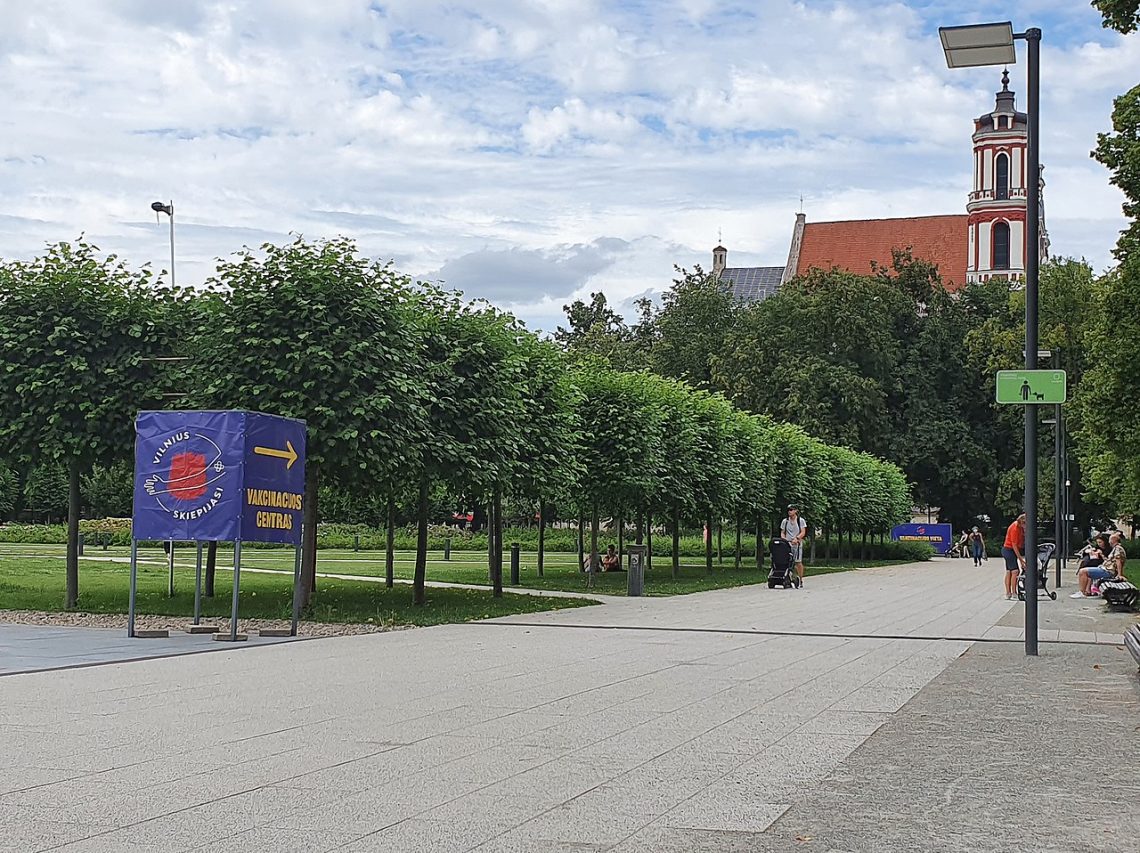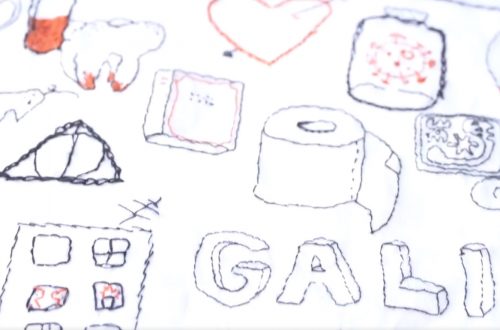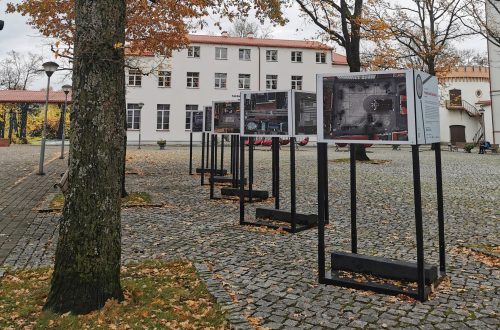
An open-air exhibition “Homo absentia” (Vilnius, Lithuania)
Cultural institutions during the lockdown were looking for the different ways of how to reach their audience. Mostly that was the virtual activities which could not last long because people started to get tired of the “online” everything. Moreover, virtual exhibitions couldn’t in most cases replace the need to be face-to-face with an artwork. Therefore, the Lewben Art Foundation together with the partners organized an open-air exhibition “Homo Absentia” (The Person is Missing/Absent). This exhibition created a unique opportunity for the residents of Vilnius to change their routes and to visit the open-air exhibition on their daily routine.
Background
Exhibition was organized by the Lewben Art Foundation together with the partners – Lithuanian Photographers Association, Vilnius City Municipality, advertising company, “JCDecaux”. The Lewben Art Foundation was established in 2013 by art patron, collector, and chairman of the Board at Lewben – Vilius Kavaliauskas and his wife Rita Kavaliauskienė with the aim of making the constantly growing collection of 1 500 pieces of artwork representing more than 300 artists available to the public. The collection of the Foundation includes artwork of various media, starting with painting, sculpture, photography, graphics and includes video works, installations, and documented performances. It covers the period from the 20th century Lithuanian modernism to Lithuanian and international contemporary art. The Foundation has plans to establish its own exhibition spaces in the future (their vision becomes reality), but for the time being, the Foundation cooperates with professional visual art institutions in Lithuania and abroad. The Lewben Art Foundation not only organizes exhibitions in cooperation with art historians, curators, artists, and cultural foundations but also provides the financial support for artists. Their main partners in this project – Lithuanian Photographers Association – is one of the most important organizations coordinating the development of the art of photography in Lithuania. The association was founded in 1969 and currently unites about 300 professional photographers.
Description
The exhibition “Homo absentia” was inspired by the global pandemic. During the second wave of the pandemic, it was exhibited in the squares of Vilnius. The exhibition was not only the present for the Vilnius city but also decorated the city and delighted the residents with contemporary art in their daily routine when all cultural institutions were closed. “Homo absentia” examines a global pandemic that has affected or will affect human relations and connections lost or changed because of quarantine, their importance which is undeniable even during the pandemic. Planning for the exhibition began with the announcement of a global pandemic, when the museums were closed, and cultural entertainment declined. The authors of the project came up with the idea to create a map in Vilnius Old Town which could be safe, full of culture and reflections on current (pandemic) events. The exhibition presents the artworks of the five young Lithuanian photographers. These artworks are not only taken from the Lewben Art Foundation’s collection, but also borrowed by the photographers themselves.
The exhibition was free for everyone, also it was available (and still is) even after the quarantine. At first, the exhibition was presented in Vilnius but because of restrictions to migrate inside the country not many people had a possibility to see it. Therefore, it was decided that after these restrictions the exhibition will migrate around the country and inspire new initiatives and sustainable solutions. It was already exhibited in Šiauliai and Neringa and hopefully in the future will be brought to other cities. It is worth to mention that the exhibition relates to the sustainable art. The construction concept of the exhibition is an example proving that exhibition and art objects on display can become more environmentally friendly if created in a way that they can be reused many times. Moreover, the urban decision responds to the idea of the exhibition, which speaks about the relations. According to the architect of the exhibition Aurimas Syrusas “as our physical connection is currently broken, the exhibition is divided into separate segments. However, all segments are connected by an imaginary thread – the directions of structure react to the layout of another segment of the exhibition, thus creating conditional dialogues, links.”
Impact
For a long time, the team of Foundation had been talking about various ways in which artworks could find different forms in which to meet their audience outside of museums and art spaces. The lockdown accelerated this process and the Foundation presented artwork in the public space inside the city in a quality way. The exhibition in Vilnius attracted great interest of the citizens. It has probably become one of the most “Instagramed” exhibitions organized by the Lewben Art Foundation which received a lot of shares in social networks. This was primarily influenced by the works of young but already famous Lithuanian photographers, who supplemented the urban landscape of the city emptied during quarantine, as well as new architectural forms which framed the exhibited photographs. The exhibition examines how the global pandemic has affected and will still affect human relationships. It raises the question as how things change when people are isolated, public spaces are de-humanized, and human relationships are isolated, broken, and in many cases, transferred to a virtual space. When everything went virtual, for many people, creating the opportunity to see real artwork in the public space became essential during the pandemic. This opportunity was also important for artists. In these extremely difficult times, art can help to strengthen our psychological health, and the artworks of Lithuanian photographers on display also contributed to it.
Interpretation
The exhibition was right on the time what people needed when the second lockdown in Lithuania started. When everything was closed, and people get tired of virtual things, this kind of exhibitions helped for people missing the cultural life. On the same way, for the artist – to still feel motivation and support. The exhibition is important not only about its idea but also about different perspective to artworks – movement to the more sustainable art. Therefore, it is a good example for outdoor exhibition organizers in future. It might be that if in case the situation repeats, outdoor exhibitions will be the first against the virtual ones.
References
- The Lewben Art Foundation, https://www.lewbenart.com/about-us/
- “Open-air exhibition ‘Homo Absentia’ in the Old Town of Vilnius” (January 7, 2021), Echo Gone Wrong online magazine, https://echogonewrong.com/open-air-exhibition-homo-absentia-in-the-old-town-of-vilnius/
- “Homo Absentia. An open-air exhibition in Vilnius” (January 25, 2021), art and culture website Arterritory.com, https://arterritory.com/en/visual_arts/topical_qa/25371-homo_absentia_an_open-air_exhibition_in_vilnius?fbclid=IwAR2fb_AwbzYBHFTTCnhAg1pJgTHlM2cnZHJP392Iz2ePA-vGRKToF5DvcAc
Author




